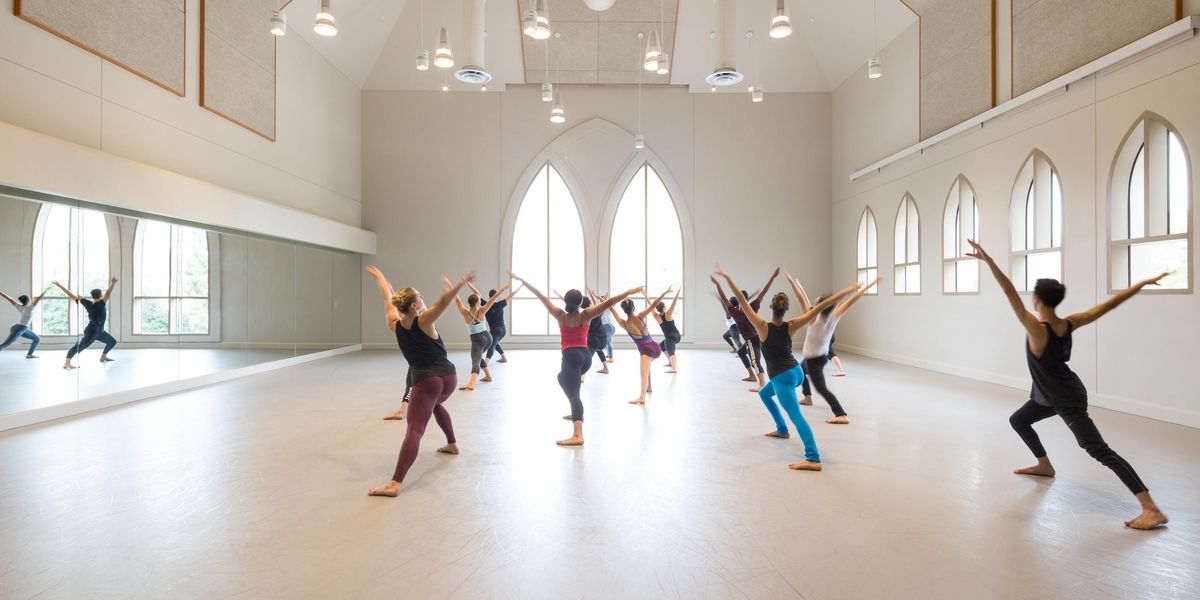These Ad Campaigns Show That Dance Sells
Misty Copeland doesn’t typically spend her days balancing on demi-pointe in lace-up sneakers, wearing the briefest of running shorts and a T-shirt knotted jauntily above her hips. But Under Armour’s series of “I Will What I Want” ads presents a portrait of this artist as an athlete—in the brand’s athletic wear. And for the makers of the campaign, that sends exactly the right message.
“We are a disruptive brand: We look at things in a different way. We see women athletes as coming in all shapes and sizes, and Misty, to us, is part of that,” says Under Armour vice president of marketing for its women’s division, Heidi Sandreuter. “She doesn’t fit a traditional mold. She allows us to represent a broader spectrum of athleticism.”
Under Armour is just one of several companies harnessing the power of dance to promote their products. The past few years have seen an explosion of ads and marketing campaigns featuring top concert dancers from the ballet and modern dance worlds. And dance isn’t just adding some zest to a background to sell Old Navy jeans; it’s often the subject of the ad itself—as seen in Diesel’s Jogg jeans ads, showcasing an alphabet of dance; Christmas ads for Baileys, based on The Nutcracker; the Gap’s “Denim Moves You” ads with street dancer Lil Buck; and even the misguided Free People commercial, starring an inexperienced dancer with sickled feet talking about what dancing means to her.
Dance is having a global moment right now, between reality TV shows and viral music videos, and advertisers are eager to get in on the act. Dance, like sex, sells. It’s both potently emotional and visual. And it appeals to a wide range of tastes, cultures, age groups and experiences. Brands are benefiting greatly from the association—and dancers are getting a gazillion new consumer eyes greedily feasting upon them.
Of course, dance in advertising isn’t new. But the way it’s used has shifted. When Anna Pavlova lent her image to endorse Pond’s Vanishing Cream in 1914, the connection was that she, like the product, was a thing of ephemeral beauty. A 1976 “What becomes a Legend most?” ad for Blackglama mink coats showed Martha Graham, Margot Fonteyn and Rudolf Nureyev draped in luxurious furs. They looked like members of the aristocracy—dancers only a rich patron could love. In Rolex ads from the ’80s and ’90s, Cynthia Gregory and Sylvie Guillem were also presented as objects of connoisseurship, admired for their elegance, but at a remove from the common touch.
Today, remote and delicately scented ballerinas are no longer the fashion. Advertisers now look for dancers who can move boldly without inhibition, who are strong in body and also in mind, and who are not at all reticent about revealing the grit behind their glamorous onstage image.
Rag & Bone’s commercial featuring contemporary dancer/choreographer Kyle Abraham, for instance, alternates between footage of a sexy duet in a dirty warehouse with images of pigeons flying off a Brooklyn rooftop. The film, by acclaimed music video director Wendy Morgan, capitalizes on Abraham’s edgy, rugged aesthetic. “Hopefully people are seeing real people, real bodies moving in space and having a connection to one another,” Abraham says of the choreography.
The Under Armour ads also present a more realistic image of a dancer, showcasing Copeland as a powerhouse: muscular, driven, strong. Gone is the stick-thin ballerina of yesterday. “It’s killing that perception that we’re just pretty, that being feminine means you’re not also powerful, in control and a leader,” says the American Ballet Theatre principal. “Having a brand as big and as respected in the sports arena wanting to endorse a ballerina is something that has never been done before.” Copeland feels the campaign is challenging preconceived notions of what a dancer is—or isn’t.
The ads have raised Under Armour’s profile while also fattening its bottom line. “We’ve definitely seen an uptick in sales,” Sandreuter reports. Significantly, it is a ballerina who is helping Under Armour re-brand itself as a company that caters to women who spin, kickbox, lift weights and run. The video’s theme of overcoming obstacles is something that everyone—not just dancers—can relate to.
But if dance is helping the advertisers, the advertisers are also helping dance. “When dance is seen more in the media it demystifies it as something distant and unattainable,” says Tina Rasmussen, director of performing arts at Toronto’s Harbourfront Centre, who has witnessed an increase in attendance for dance events over the last two years. “It’s a democratization of dance that’s really helping to deliver the message that bodies communicate.”
Lexus took advantage of that idea in 2013 with a TV ad that artfully juxtaposes the power and speed of its entry-level luxury car, the IS, with the strength and velocity of English National Ballet’s Tamara Rojo. Featuring solo choreography by Russell Maliphant, the black-and-white video shows Rojo with arrested port de bras and split leaps in slow motion. Her rapid-fire bourrées merge with images of fast-turning wheels on a ribbon of open highway. Her back arches, showing sinew and bone, and blends with an image of a beautifully sculpted car. The tagline is “Amazing in Motion.”
The ad campaign won a silver medal at the 2014 Euro Effie Awards (the advertising industry’s Academy Awards), as well as scores of new ballet lovers. The message Lexus wanted to communicate, a stronger body with control, felt perfectly expressed through dance. “You can’t get a better physical representative than the ballerina,” says Christopher Taylor, senior manager for brand and marketing communications for Lexus Europe. “There is a perception of ballet as a premium art form. Extolling the virtues of ballet expresses the virtues of the automobile.”
From Rojo’s perspective, the ad also delivers a message about ballet that she finds refreshing: “I like the fact it presents the dynamism of ballerinas,” she says. “It gives a strong image of dance and dancers that is different from the conventional frail ballerina.”




